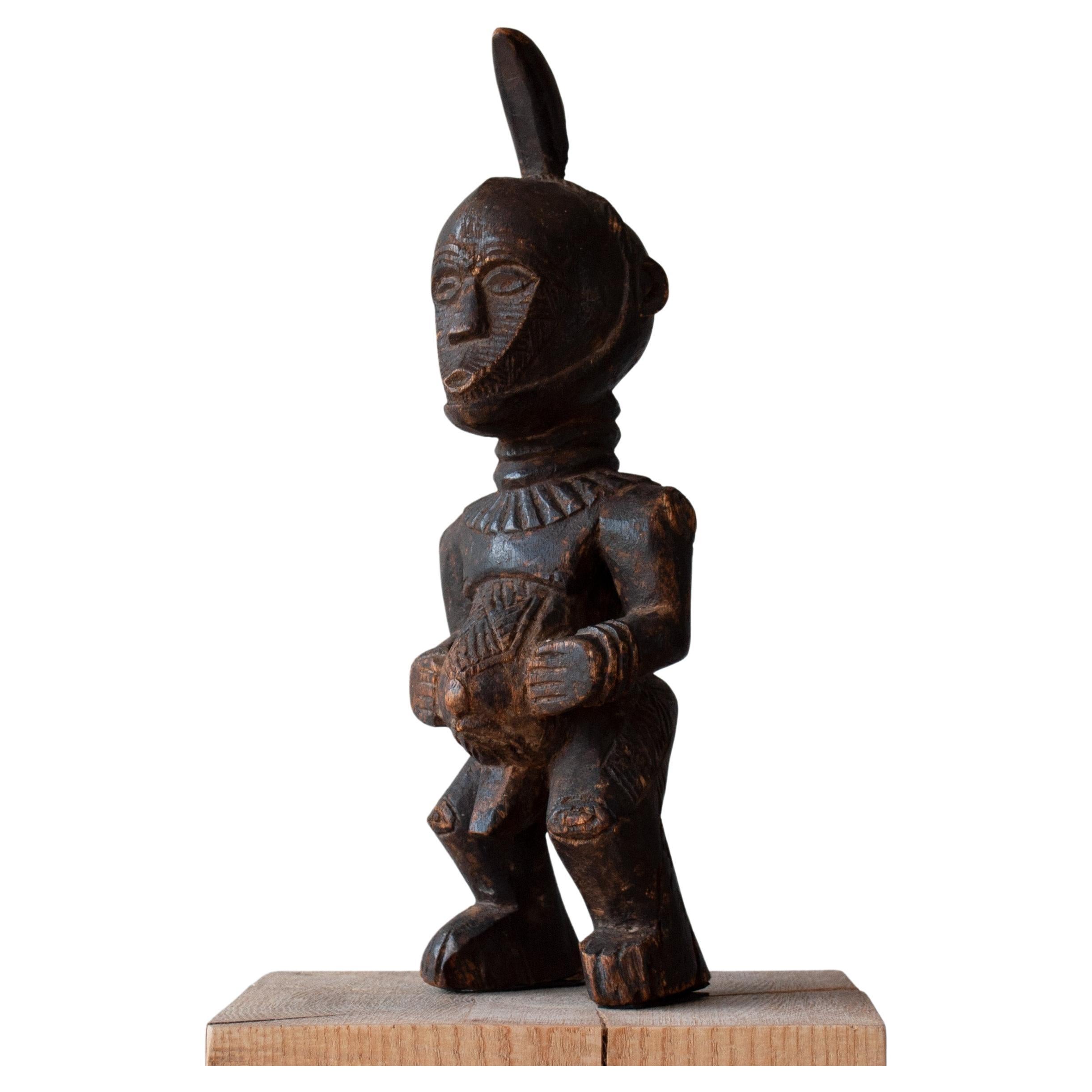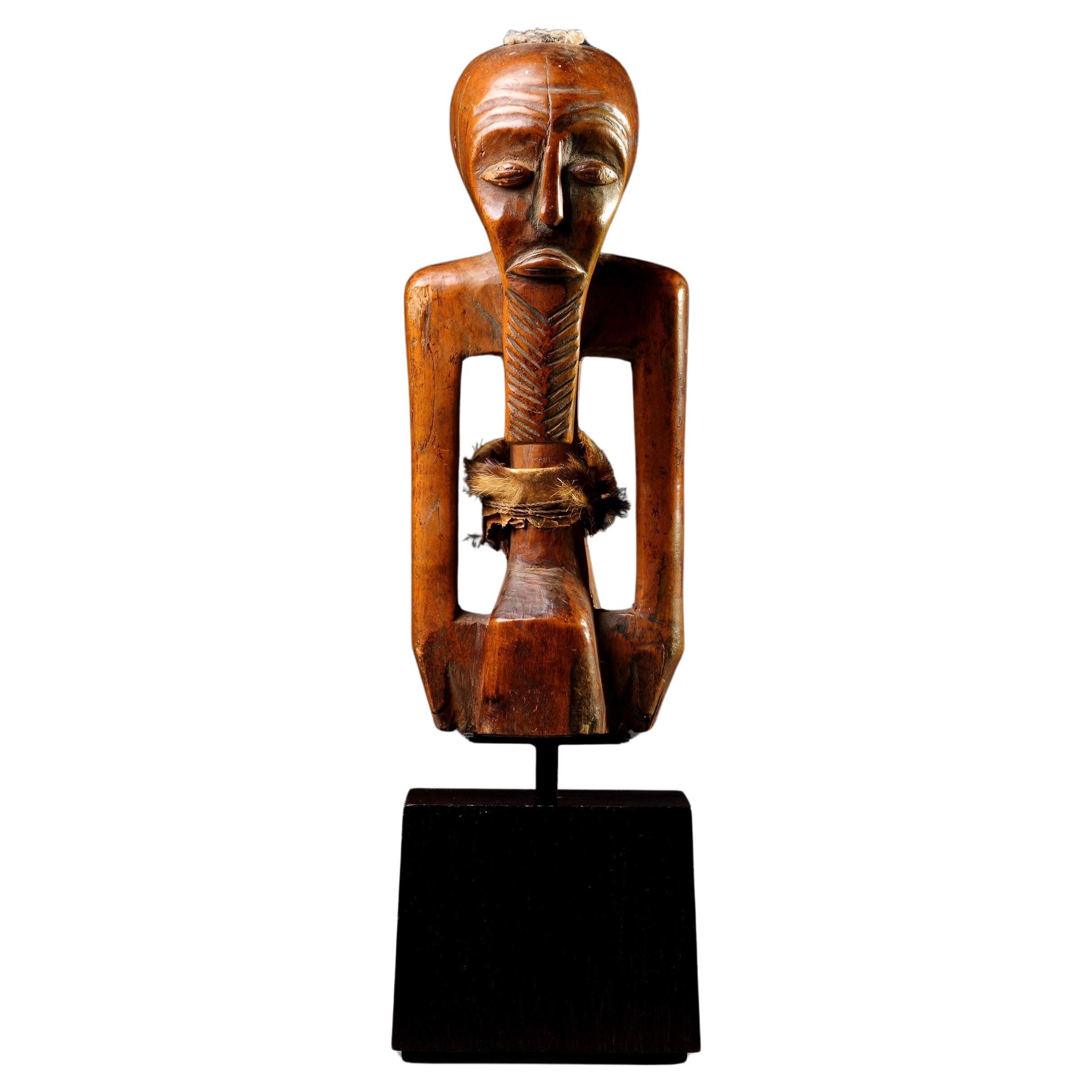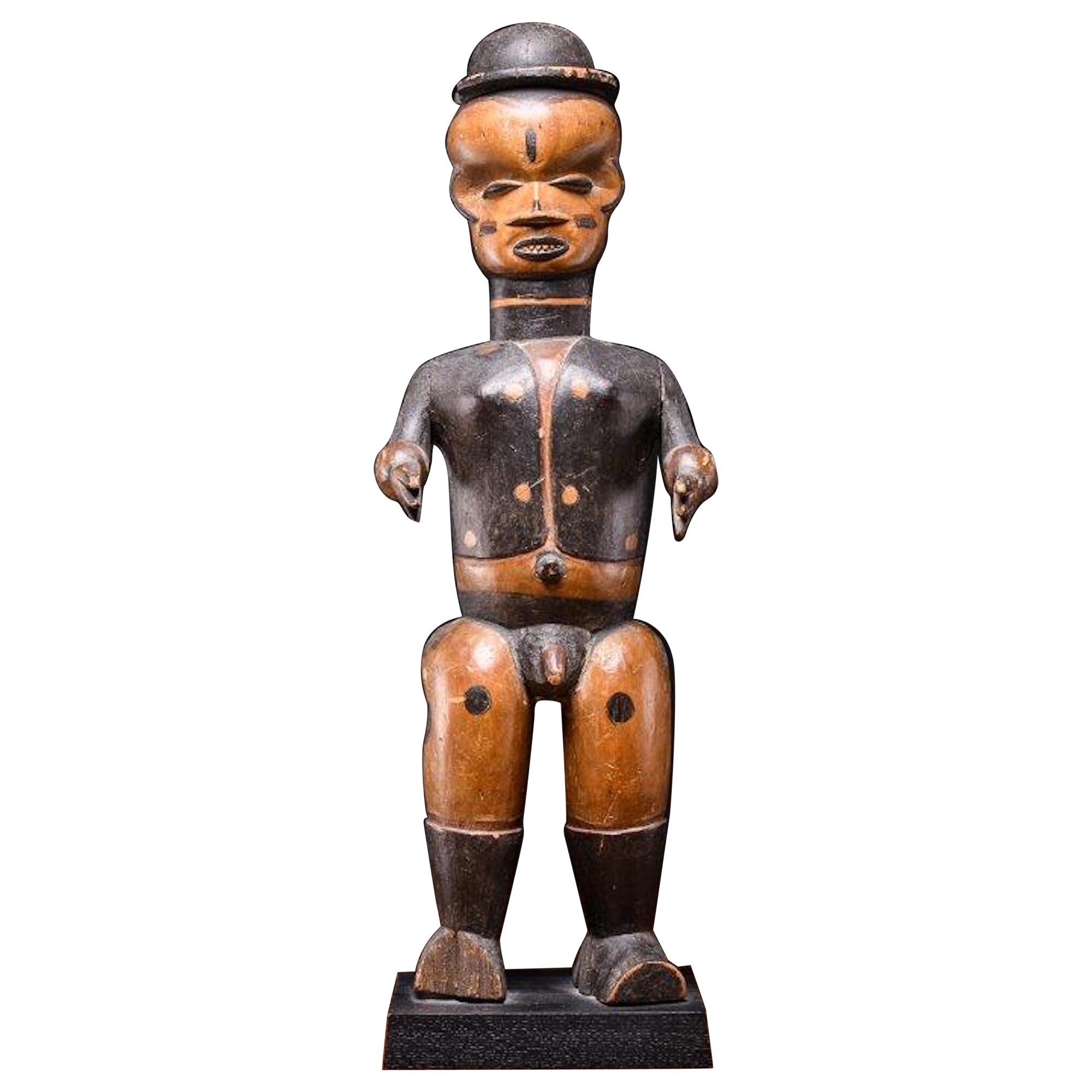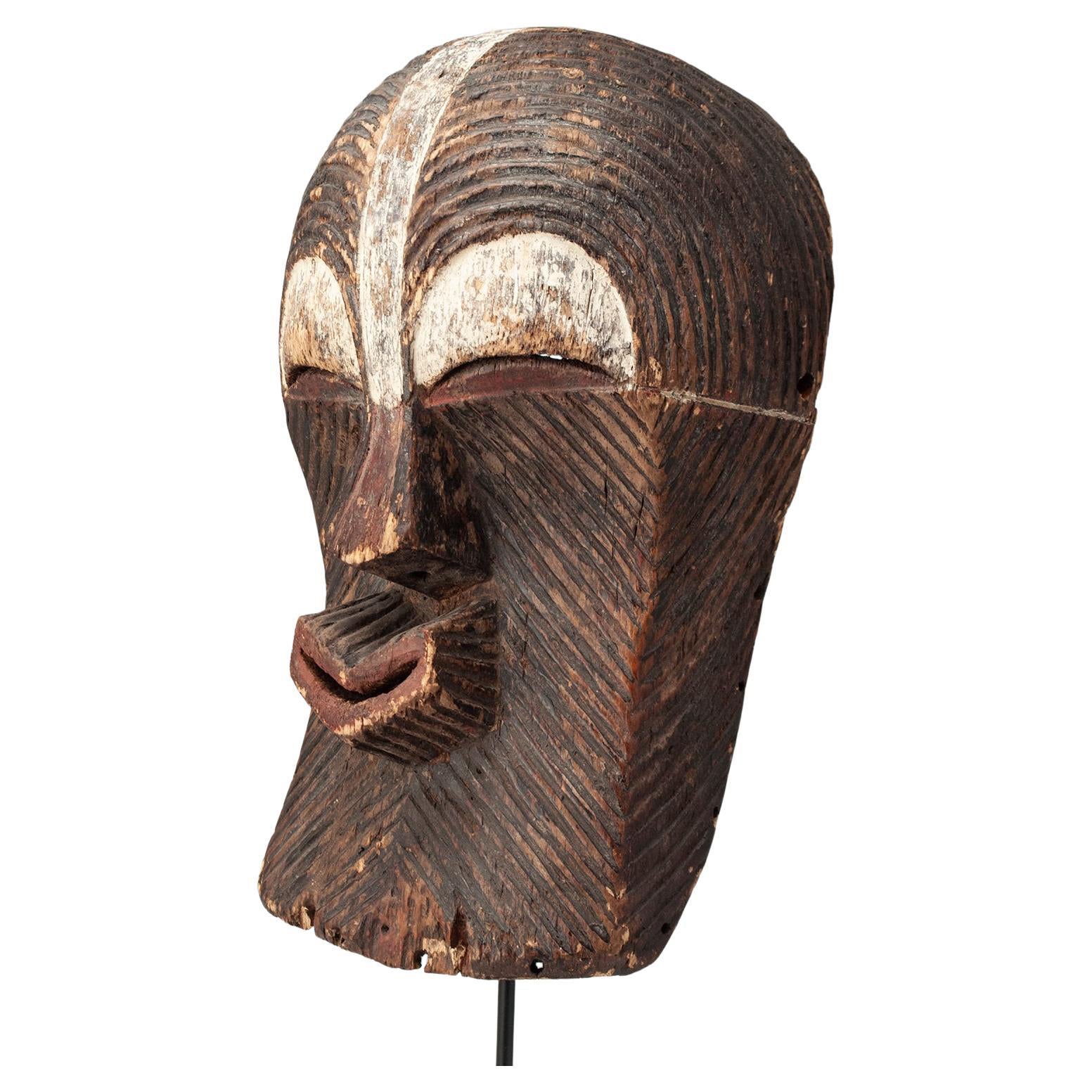Items Similar to A Songye Male ‘Power’ Figure
Want more images or videos?
Request additional images or videos from the seller
1 of 18
A Songye Male ‘Power’ Figure
About the Item
A Songye Male ‘Power’ Figure
Open aperture to the head and stomach
Fine overall patina, loss to feet
Democratic Republic of Congo
19th Century
Size: 23cm high - 9 ins high
The Michel Gaud collection
Sothebys Important African Art: ‘The Michel Gaud collection’, London, 29th November 1993, lot 132
Provenance:
The Michel Gaud collection
Sothebys Important African Art: ‘The Michel Gaud collection’, London, 29th November 1993, lot 132
Ex Private collection
- Dimensions:Height: 9 in (22.86 cm)Width: 5 in (12.7 cm)Depth: 5 in (12.7 cm)
- Materials and Techniques:
- Place of Origin:
- Period:
- Date of Manufacture:19th Century
- Condition:Wear consistent with age and use.
- Seller Location:London, GB
- Reference Number:1stDibs: LU9363239381722
About the Seller
No Reviews Yet
Vetted Seller
These experienced sellers undergo a comprehensive evaluation by our team of in-house experts.
Established in 1989
1stDibs seller since 2023
- ShippingRetrieving quote...Ships From: London, United Kingdom
- Return PolicyA return for this item may be initiated within 14 days of delivery.
More From This SellerView All
- A South Eastern Congo, Zaire Songye Protective Fetish Figure ‘Nkishi’Located in London, GBA South Eastern Congo, Zaire Songye Protective Fetish Figure ‘Nkishi’ of Geometric Form the arms placed to the side A plug of fetish material in the head cavity a strip of old hide and fur around the waist Old smooth crusted patination 19th Century – Early 20th Century Size: 20cm high – 8 ins high / 29.5cm high, 11½ ins high (including stand) The face of this protective figure is typical of the strong angularity of Songye carving. Amongst the Songye ‘Nkishi’ were associated with a magico-religious society known as ‘bukisi’ which controlled initiation camps and circumcision ceremonies. A shaman would ritually add magical substances ‘bashimba’ to activate the figure as a source of power that would give protection and ensure well-being. Larger figures ensured the tranquillity of the whole community and promoted village fecundity and fertility. Smaller personal or family ‘Nkishi’ were used for protection against illness, sorcery, witchcraft, and war and to promote fertility. Due to their considerable powers the figures were considered dangerous and so they were manoeuvred by means of rods or sticks attached to their arms. They were sometimes made to walk as if on parade. These small half figures were not always used as personal protective devices, but were placed in gourd bowls and used by diviners to communicate with the supernatural world. These divinatory calabash were filled with a number of symbolic objects such as chicken claws, teeth, stones, seeds, etc., as well as carved wooden figures. The Songye’s ritual use of calabash can be compared with the baskets used by the Tshokwe. Provenance: Ex English Private collection Acquired 1950’s Ex Finch and Co...Category
Antique 19th Century Congolese Tribal Art
MaterialsWood
- An Exceptional Eastern Cape Nguni Pipe Bowl and StemLocated in London, GBAn Exceptional Eastern Cape Nguni Pipe Bowl and Stem Wood, metal Old inscription and dated: ‘1892’ South Africa 19th Century Size: 45.5cm long - 18 ins long Published: ‘The ...Category
Antique 19th Century South African Tribal Art
MaterialsWood
- A Rare and Exceptional Carved Headrest ‘Kali Hahapo’Located in London, GBA Rare and Exceptional Carved Headrest ‘Kali Hahapo’ Excellent colour and patina Wood, sennet (coconut fibre), glass beads Tonga Late 18th / Early 19th Century SIZE: 19cm high, 5...Category
Antique Early 19th Century Tongan Tribal Art
MaterialsNatural Fiber, Glass, Wood, Coconut
- A Rare and Historically Important Artefact Recovered from HMS Adventure in 1775Located in London, GBA Rare and Historically Important Artefact Recovered from HMS Adventure in 1775 after Captain James Cook’s Second Voyage to the Pacific A ‘coconut husker’ made by a ship’s carpenter aboard HMS Adventure in the style and design of a Native Islander’s ethnographical ‘coconut husker’ An engraved and inscribed copper plaque: A memento from The Sandwich Islands Coconut Husker used aboard HMS Adventure and recovered from The Royal Dockyard Deptford 1775 Oak, iron, brass, copper, handmade iron screws Fine rich colour and patina England / Sandwich Island 18th Century SIZE: 15.5cm high, 49.5cm long, 20cm wide (max) - 6¹⁄₈ ins high, 19½ ins long, 7⁷⁄₈ ins wide (max) Provenance: Found in a Scottish attic after centuries of lying hidden in a crate Ex Private Scottish collection Captain James Cook’s second voyage aboard the Resolution and accompanied by HMS Adventure set sail in July 1772. The discovery of the southern eight islands of the Sandwich Islands group was in 1775. The given name was chosen in honour of John Montagu, 4th Earl of Sandwich, First Lord of the Admiralty. The copper plaque and inscription however should not be read as The Sandwich Islands ‘Owhyhee’ (The Hawaiian Islands) which were later discovered on January 18th, 1778, on Captain Cook’s third voyage. Rather the inscription refers to ‘South Sandwich Islands’ lying to the south east of South Georgia and only renamed later with the word ‘South’ to distinguish them from the ‘Sandwich Islands’ now known as the Hawaiian Islands. Not withstanding during Cook’s second voyage he visited Easter Island, Tahiti, Society Islands, Niue, Tonga, New Hebrides, New Caledonia, Norfolk Islands, Palmerston Island and South Georgia. The crew onboard having been exposed to various types of ‘coconut huskers’ adapted those designs into the example we now see, having been rescued from HMS Adventure in 1775. A rare example of 18th century cross...Category
Antique 16th Century American Tribal Art
MaterialsBrass, Copper, Iron
- An Unusual Polynesian ‘Child’s’ Fighting ClubLocated in London, GBAn Unusual Polynesian ‘Child’s’ Fighting Club Old patina and mellow colour Wood Fiji 19th Century SIZE: 84.5cm long - 33¼ ins longù Provenance: Ex Welsh collection, sold at au...Category
Antique 19th Century Fijian Tribal Art
MaterialsWood
- An Exceptional New Zealand Māori Bugle-Flute ‘Pu Turino’Located in London, GBAn Exceptional New Zealand Māori Bugle-Flute ‘Pu Turino’ With soft and shallow surface decoration profusely carved with a dynamic scrolling motif made of two sections bound together with original and complete ‘Kiekie’ vine roots at four points The bow shaped mouth piece of anthropomorphic form with small rounded sounding hole to the end Soft silky smooth medium brown patina 18th Century Size: 33.5cm high, 4.5cm wide, 2.5cm deep - 13¼ ins high, 1¾ ins wide, 1 ins deep Provenance: Collected by Robert Nutter Campbell 4th Regiment of Madras Native Infantry on his return from Singapore 1829 Thence by descent Sold Sothebys, New York, May 17, 2002, lot 368 Ex Private English collection Ex Finch and Co...Category
Antique 18th Century New Zealand Tribal Art
MaterialsWood
You May Also Like
- Songye Nkisi Power FigureLocated in London, GBA rare and large hand carved horned Songye Nkisi power figure. A ‘Nkisi’ is a protective power figure of the Songye, southeastern Congo. Such sculptures are used as a major role in t...Category
20th Century Congolese Primitive Tribal Art
MaterialsWood
- Songye power figure NkisiLocated in London, GBSongye Power Figure NKISI Provenance: - Private collection, London, United Kingdom Songye Power Sculpture Like the Kongo and other related Bantu cul...Category
20th Century Congolese Tribal Art
MaterialsRaffia, Wood
- Songye Female Wood Figure with horn and brass hair ex SothebysLocated in Point Richmond, CACarved wood standing female figure with projecting stomach, attached horn on top of head, and hair in form of small hand shaped copper pieces. Old glass beads around arm and neck. It...Category
Mid-20th Century Congolese Tribal Tribal Art
MaterialsWood
- Ibibio Anthropomorphic Standing Male Janus Figure, NigeriaLocated in Leuven , BEThis elaborate Janus statue is a rare example of an Ibibio free-standing figure to recall a well-defined ancestor in what seems a European outfit .The Ibibios lend supernatural power...Category
20th Century Congolese Tribal Art
MaterialsWood
- Tribal Style Songye Kifwebe Mask, D. R. CongoLocated in Point Richmond, CAThis graphic Songye Kifwebe mask has fine carved lines curved over the eyes and diagonal lines radiating from the nose and mouth in classic Kifwebe form. ...Category
Late 20th Century Congolese Tribal Masks
MaterialsWood
- Makonde Male Figure in European Dress African ArtLocated in Sharon, CTA beautiful modern piece of sculpture of a distinguished gentleman. Executed by a Makonde master carver in ebony. Well dressed, complete with cuffs, creases and shoes.Category
Mid-20th Century South African Tribal Tribal Art
MaterialsEbony





